Let's enjoy bird watching in the center of Greater Tokyo
Supporter's Report
Supporter’s Report
The special reports below are written by foreigners who are guests at the park and support our activities. The park hopes to continue to increase the number of foreigners who use the park. If you would like to write a short blog about your visit to the park to contribute to this page, please contact us by email.
It was a perfect winter day for an outing・・・・
Bird park on 15th February 2017TOKURA Wataru
It was a perfect winter day for an outing -no wind, not too cold, and sunny.
First I went down to the East Freshwater Pond to find some waterbirds. There were Grey Herons and Great Cormorants on the shore, and Little Grebes diving in the water. As I was watching these birds, I fortunately observed a Common Snipe passing by the shore, though it was well camouflaged and hard to find it.
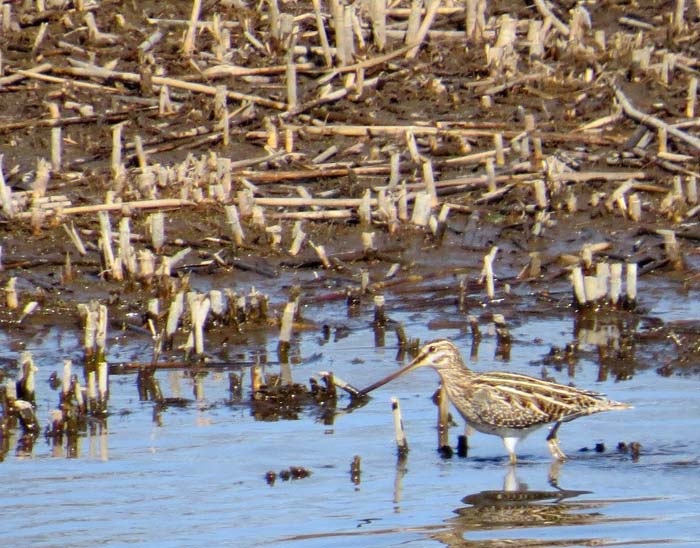
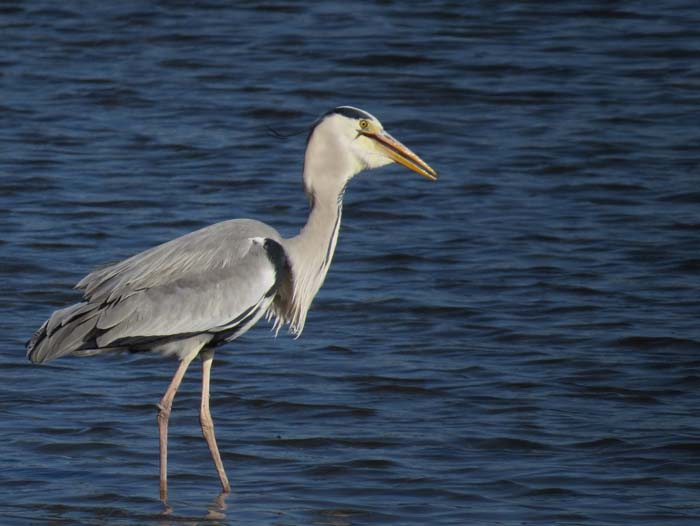
In the middle of the Brakish Water Pond, I saw several Tufted Ducks and Eurasian Coots swimming. On the shore Grey Herons were wadering and Great Comorants were perching on the poles. Even though it was a middle of the winter, quite a few crubs, perhaps Yamato Osagani (Macrophthalmus japonicus), were seen on the tidal flat, and I spend some time to watch Grey Herons feeding these crabs using its long neck. In the visitor centre, I met several excited visitors who have just spotted a Northern Goshwark, so I also tried to find it but I couldn't. I continued my walk to the Observation Hat 2 and then to 1, and saw some more Grebes and Tufted Ducks but nothing was new. Outside the Observation House 2, Tabunoki's (Machilus thunbergii) flower started blossoming, telling me that spring is around the corner.
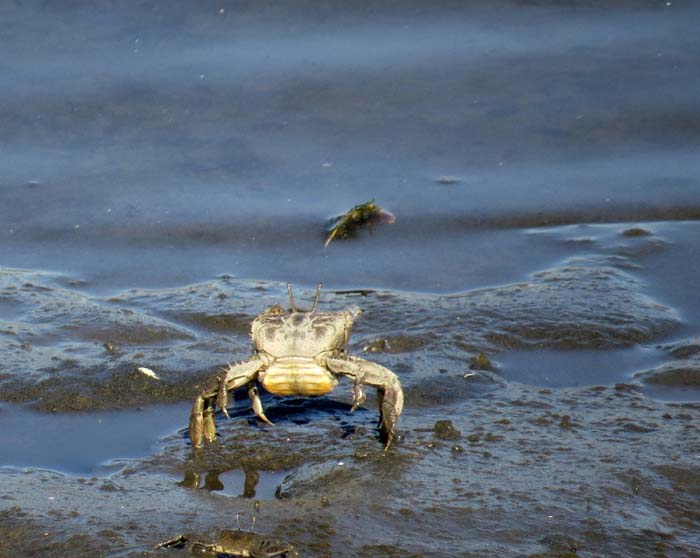
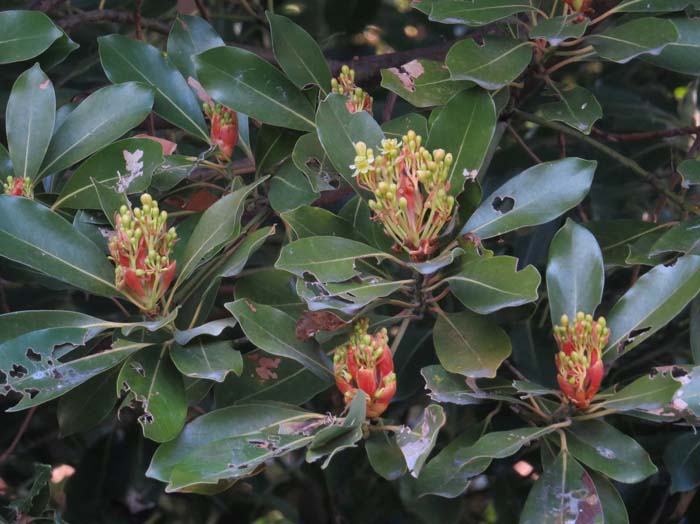
This was my first time to visit the Tokyo Port Wild Bird Park, and I was really surprised at the tranquility of the park -difficult to imagine the heavy trafic and busy central markets and Haneda airport behind the evergreen forests surrounding the park. I didn't mention about forest birds, but I saw White-eyes, Turtle doves, Meadow bunting, Bull-headed shrike, etc. those birds you can usually find in the greener parks in Tokyo.
The Tambo Club activity update!
Oct 16 Traditional Methods for Threshing Rice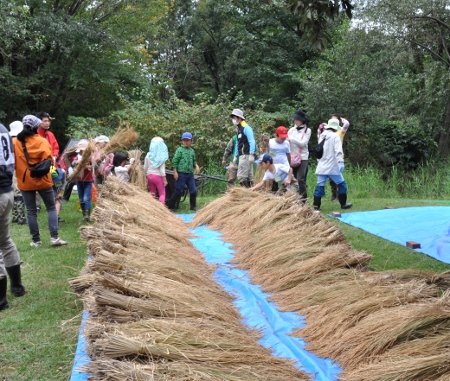 We could gather so many stalks of rice! It’s exciting to know how much rice we will get from it!
We could gather so many stalks of rice! It’s exciting to know how much rice we will get from it!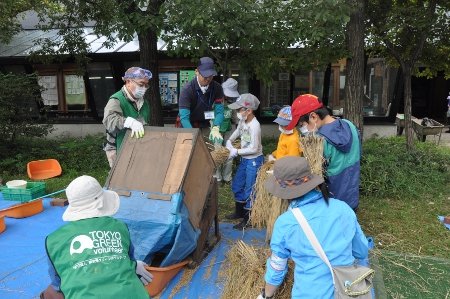 We divided up the tasks into three main groups.
We divided up the tasks into three main groups. 1. We will first do a “foot threshing method” to roughly loosen the plant material and get the husks off the grass stalk.
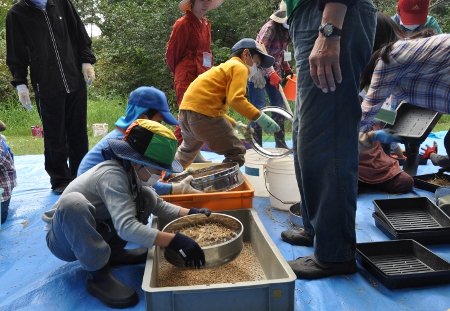
Next we sift the and separate the plant material from the seed husks.
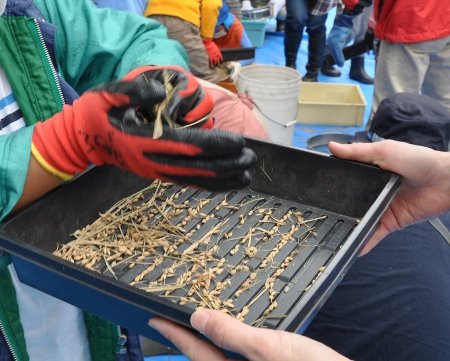 Then, we take a handful of material and rubbing our hands together, separate out a few seeds.
Then, we take a handful of material and rubbing our hands together, separate out a few seeds. 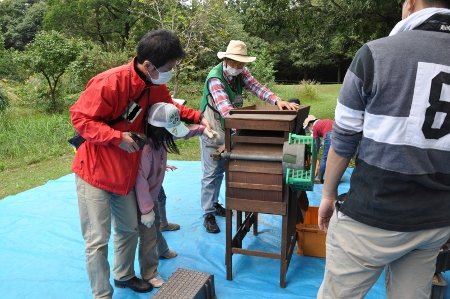 The final step is using the winnower to remove the rice grain from the chaff.
The final step is using the winnower to remove the rice grain from the chaff.By spinning the handle, the wind inside the machine is generated
Everyone could experience the old-fashioned way of threshing rice, and at the end of the day we were all covered with dust! The surveys taken after the event came back with comments like “Wow! People back in the day had it hard!” “I’m worn out!”
A sunny day perfect for panorama shots
Date: 12 May 2016
Weather: Fine
Writer: Florence Lui
It was great to finally have a full day of sun after a spell of rainy days
post Golden Week.
There were quite a few birds in the East Freshwater Pond. As usual, the
Common Pochard (Aythyaferina) and Spot-billed Ducks (Anas zonorhyncha) were
feeding in groups, ducking their heads deep into the water so their body was
only visible from flank down (or up since they were upside down!).
There were
also a group of Great Cormorants (Phalacrocorax carbo) nearby - they seemed like
they didn’t have a care in the world and splashed about the pond. Two Egrets
were also spotted; a Great Egret (Aldea alba) and an Intermediate Egret (Egretta
Intermedia). They both preferred to gracefully strut near the grass in solitude.
We were lucky to see bluish-green lores on the Great Egret (Aldea alba), an
indication that breeding season has commenced.
A Grey Herron (Ardea cinerea) was casually pacing past numerous frenzied crabs on the mud flats of the Brackish Water Pond. A Whimbrel (Numenius phaeopus) was close-by, its small stature was much more noticeable next to the Grey Herron (Ardea cinerea).
Eurasian Tree Sparrows (Passer montanus) and a Large-billed Crow (Corvus
macrorhynchos) were observed in the East Wing of the park en route to Observation
Deck 4. The Large-billed crow was slowly making its way to the top of a
tree by progressively jumping to the next highest branch. When it got high
enough, it started picking at sticks - wonder what he had up his sleeve

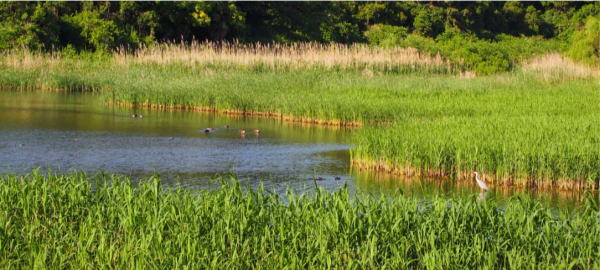

Tokyo Port Wild Bird Park
〒 143-0001
3-1 Tokai Ota-ku, Tokyo-to, Japan
TEL: 03-3799-5031
E-mail: yachokouen at wbsj.org
The Tokyo Port Wild Bird Park is one of the “Marine Parks” which are under
the jurisdiction of the Bureau of Port and Harbor, with the Tokyo Metropolitan
Government.
The Park is managed by two organizations working in partnership – the Tokyo
Port Terminal Corporation and the Wild Bird Society of Japan and manage
the park as the designated administrator with the cooperation of the NPO
Tokyo Port Green Volunteers and the Tokyo Port Wild Bird Park Volunteer
Guides.